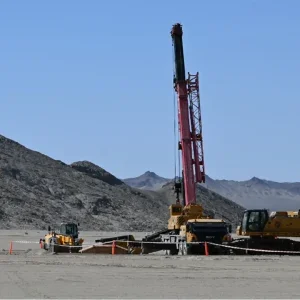The purpose of drilling is to test for the possible extension of the Roughrider Zone onto the company’s Waterbury Lake property. As previously announced by the company, a hole MWNE-09-116 intersected 70.34% U3O8 over 2.5m within 13m grading 18.12% U3O8, and identified intersections as high as 84% U3O8. Hole MWNE-09-129, collared approximately 20m to the SW of hole MWNE-09-116 intersected 5.0m grading 15.65% U3O8. Both drill holes were collared approximately 10m from Fission’s property boundary, in the vicinity of the Discovery Bay Zone; with the mineralized interval intersected 45-50m from the Waterbury Lake property boundary.
Previous geophysical surveys identified various priority drill targets, which further demonstrates the excellent potential exhibited by the 40,256 hectors Waterbury Lake Property for hosting an undiscovered uranium deposit. The summer drill program would also include two drill holes which test a resistivity low anomaly, located in a previously unexplored area, approximately 8km to the southwest of the Denison-AREVA Midwest deposit. The final two holes would test a resistivity low anomaly located approximately 3 km north of Discovery Bay.
A property wide high resolution airborne magnetic survey, which began earlier this month, is 70% complete. Results from this survey will enable Fission’s technical team to prioritize areas of interest over the entire project area.
While exploration at Fission’s Waterbury Lake project remains focused on the ground adjacent to Hathor’s Roughrider Zone uranium discovery. The Waterbury Lake Property is located in the northeast part of the Athabasca Basin, where various open-pit uranium deposits, including Midwest Lake, McClean Lake, and Rabbit Lake, are found. The Waterbury Consortium has budgeted C$4.0m for exploration in 2009. The Waterbury Lake Project is operated by Fission.






